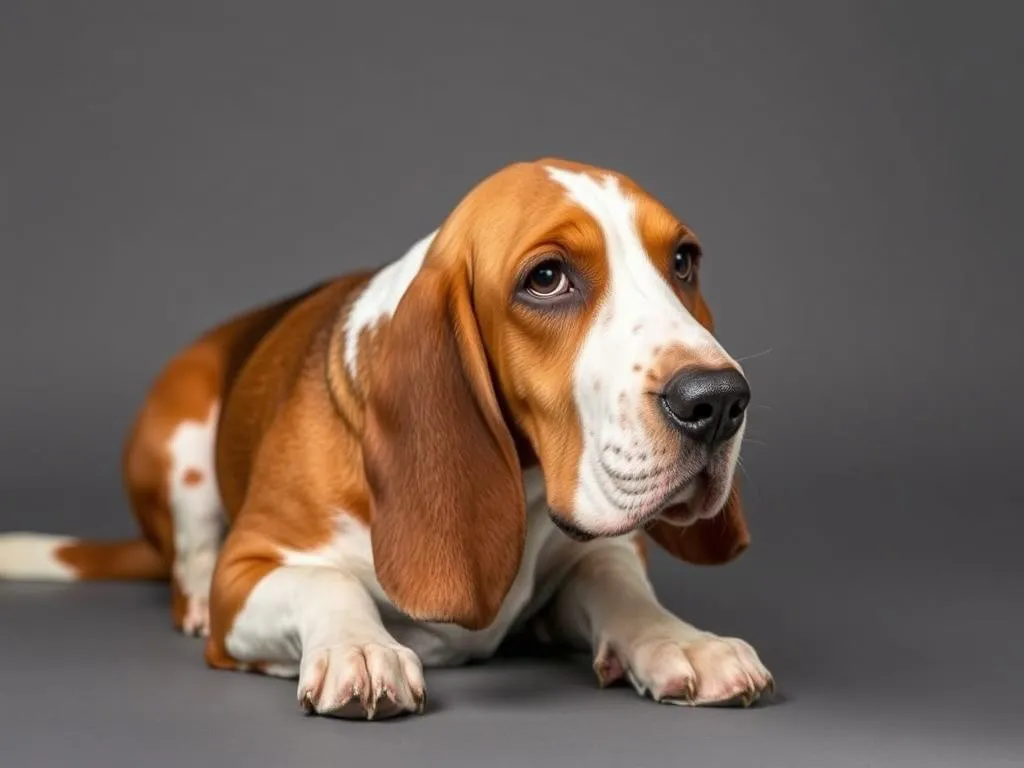
Basset Hounds are a beloved breed known for their short legs, long ears, and droopy eyes. These affectionate dogs are gentle giants in their demeanor, making them wonderful companions for families and individuals alike. However, one common concern among potential Basset Hound owners is shedding. Understanding how much does a Basset Hound shed is crucial for effective pet care and maintaining a tidy home.
Understanding Basset Hounds
Breed Characteristics
Basset Hounds are easily identifiable due to their unique physical traits. They typically weigh between 40 to 65 pounds and stand about 14 to 15 inches tall at the shoulder. Their short, stocky bodies are complemented by their long ears, which help to enhance their extraordinary sense of smell. Basset Hounds are friendly, laid-back, and affectionate, often forming strong bonds with their families. They are also known for their stubbornness, making training a challenge at times.
Historical Background
Originally bred in France for hunting small game, Basset Hounds have a rich history. Their name “Basset” translates to “low,” referring to their short stature. The breed’s keen sense of smell and endurance were prized traits that made them effective hunters. Understanding their background provides insight into their grooming needs. Their short coat is designed to withstand different weather conditions, but it still requires appropriate care to manage shedding effectively.
Shedding in Dogs
What is Shedding?
Shedding is a natural process in which dogs lose old or damaged hair to make way for new growth. This cycle consists of three phases: anagen (growth phase), telogen (resting phase), and catagen (transitional phase). During the telogen phase, hair follicles prepare to shed, which can lead to noticeable hair loss, particularly in certain breeds.
Shedding vs. Non-Shedding Breeds
Understanding the difference between shedding and non-shedding breeds is essential for potential dog owners. Shedding breeds, like Basset Hounds, will naturally lose hair throughout the year, while non-shedding breeds, such as Poodles, do not shed but require regular grooming to prevent matting. A common misconception is that all dogs that shed do so heavily; however, shedding levels can vary greatly depending on the breed.
How Much Do Basset Hounds Shed?
Average Shedding Levels
So, how much does a Basset Hound shed? On average, Basset Hounds exhibit moderate shedding. This means they will lose hair regularly but not excessively compared to some other breeds. When compared to breeds like Golden Retrievers, which are known for heavy shedding, Basset Hounds are relatively low-maintenance. However, during certain seasons, like spring and fall, you may notice an increase in shedding as they prepare for changes in temperature.
Factors Affecting Shedding
Seasonal Changes
Basset Hounds typically shed more in spring and fall. During these seasons, their coat transitions to accommodate warmer or cooler weather. As a result, you may find more hair around the house during these times. Regular grooming can help manage seasonal shedding.
Health and Nutrition
The health and nutrition of your Basset Hound play a significant role in their shedding patterns. A balanced diet rich in omega fatty acids can promote a healthy coat and skin, reducing excessive shedding. Conversely, health issues such as allergies, parasites, or skin conditions can lead to increased hair loss. If you notice unusual shedding, consider evaluating their diet and consulting a veterinarian.
Grooming Habits
Regular grooming is vital for managing shedding in Basset Hounds. Brushing your dog not only helps to gather loose hair but also stimulates the skin and distributes natural oils throughout their coat. The right grooming tools, such as a rubber curry brush or a slicker brush, can make a significant difference in the effectiveness of your grooming routine.
Managing Shedding in Basset Hounds
Regular Grooming Techniques
To keep shedding under control, establish a regular grooming schedule. Aim to brush your Basset Hound at least once a week, increasing the frequency during peak shedding seasons. This will help remove loose hair before it ends up on your furniture and floors. When brushing, focus on areas where loose hair tends to accumulate, such as behind the ears and under the belly.
Cleaning and Maintenance
To minimize hair in your home, consider implementing a few cleaning strategies. Regular vacuuming is essential, particularly if your Basset Hound has free roam of the house. Using lint rollers can quickly remove hair from clothing and upholstery. Additionally, consider investing in cleaning products designed specifically for pet hair, like rubber brooms or pet hair removal brushes.
Dietary Considerations
The right diet can significantly influence your Basset Hound’s coat and shedding levels. Foods rich in omega-3 and omega-6 fatty acids, such as fish oil, can improve skin health and reduce shedding. You may also consider adding supplements specifically formulated for skin and coat health to their diet. Always consult with a veterinarian before making significant changes to your pet’s nutrition.
Health Considerations Related to Shedding
Identifying Abnormal Shedding
It’s essential to distinguish between normal shedding and abnormal shedding. If you notice excessive hair loss, bald patches, or skin irritation, this may indicate a health issue. Conditions such as allergies, infections, or hormonal imbalances can lead to abnormal shedding.
When to Consult a Vet
If you observe signs of abnormal shedding, it’s crucial to consult a veterinarian. They can help determine whether the shedding is related to a health issue that needs addressing. Regular health check-ups are also essential for Basset Hounds, as they can help catch potential problems early and ensure your dog remains healthy.
Conclusion
Understanding how much does a Basset Hound shed is an important aspect of pet ownership. These lovable dogs do shed, but with proper care and management, you can keep shedding levels under control. Regular grooming, attention to diet, and maintaining a clean home are all vital components of managing your Basset Hound’s shedding. By being proactive, you can enjoy the companionship of your Basset Hound without feeling overwhelmed by hair in your home.
FAQs
Do Basset Hounds shed all year round?
Yes, Basset Hounds do shed year-round but typically experience increased shedding during spring and fall as they transition between coats for different seasons.
Are Basset Hounds hypoallergenic?
No, Basset Hounds are not hypoallergenic. They do shed, and their drool can also trigger allergies in sensitive individuals.
What is the best brush for a Basset Hound?
A rubber curry brush or a slicker brush is recommended for Basset Hounds. These tools effectively remove loose hair while being gentle on their skin.
Can shedding be reduced with medication?
While there are medications that can help with specific skin conditions leading to excessive shedding, it’s best to consult a veterinarian for personalized advice.
How often should I bathe my Basset Hound?
Basset Hounds only need to be bathed every 1 to 3 months unless they get particularly dirty. Frequent bathing can strip their coat of natural oils, potentially increasing shedding.









